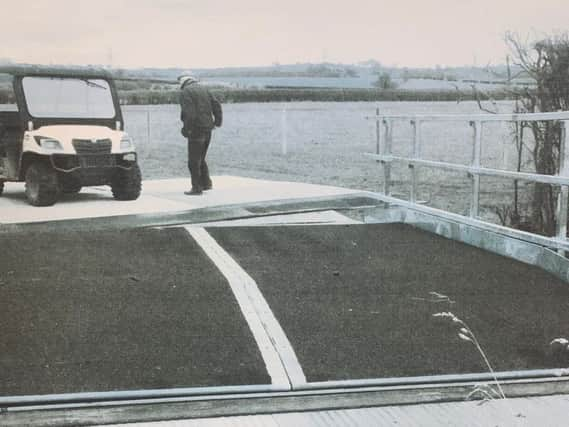HS2 contractors destroying wildlife site to create 'biodiversity zone'


The land affected is Doddershall Meadows, near Quainton.
Nearly 1 kilometer of steel tracking with 7 load bearing bridges has been laid across a County Wildlife Site, as contractors are in the process of create a new 'biodiversity zone' to offset environmental damage caused by the High Speed Train line.
A County Wildlife Site (often abbreviated to CWS) is a conservation designation in the United Kingdom, which despite conferring no statutory protection onto a site, does affirm a site's importance and value for wildlife.
The site is also of archaeological interest.
Advertisement
Hide AdAdvertisement
Hide AdChristopher Prideaux, who has had to move house since HS2 announced the route would pass through his property, said:
"What is the point of destroying this grassland, just to build a biodiversity zone in the next field? It makes absolutely no sense to me.
"The part of land they are destroying is a County Wildlife site, which is just below a site of specific scientific interest in the classification. It's an ancient pasture with wildflowers which has developed over centuries. To see it ruined by this metal tracking is nothing short of a disgrace.
"To make matters worse, they didn't inform my son who owns part of the land affected of the works."
Advertisement
Hide AdAdvertisement
Hide AdThe new biodiversity zone will be specific protected species, such as reptiles, bats and badgers as well as providing habitat for other plants and animals to flourish in with Nine wildlife ponds with aquatic planting.
Matthew Stanton, Head of Planning, Policy and Advocacy at BBOWT said “Local (County) Wildlife Sites are some of our most valuable wildlife areas. They make up key components of nature recovery networks, enabling wildlife to survive in the face of ever growing development pressures.
They must be protected as they have a huge part to play in the natural green fabric of our towns and countryside.”
An HS2 Ltd spokesperson said:
“HS2 aims to be one of the most environmentally responsible infrastructure projects ever delivered in the UK, with 35,000 trees being planted in this area as part of a network of wildlife habitats, woodlands and community spaces along the route.
Advertisement
Hide AdAdvertisement
Hide Ad"We are committed to reducing the potential impact on the environment and to holding regular information events to update the public on the project’s progress.
"The railway has been developed with great care and attention to detail over several years to ensure the long-term environmental effects of building it are kept to a minimum and its operation is mitigated as much as reasonably practicable.”